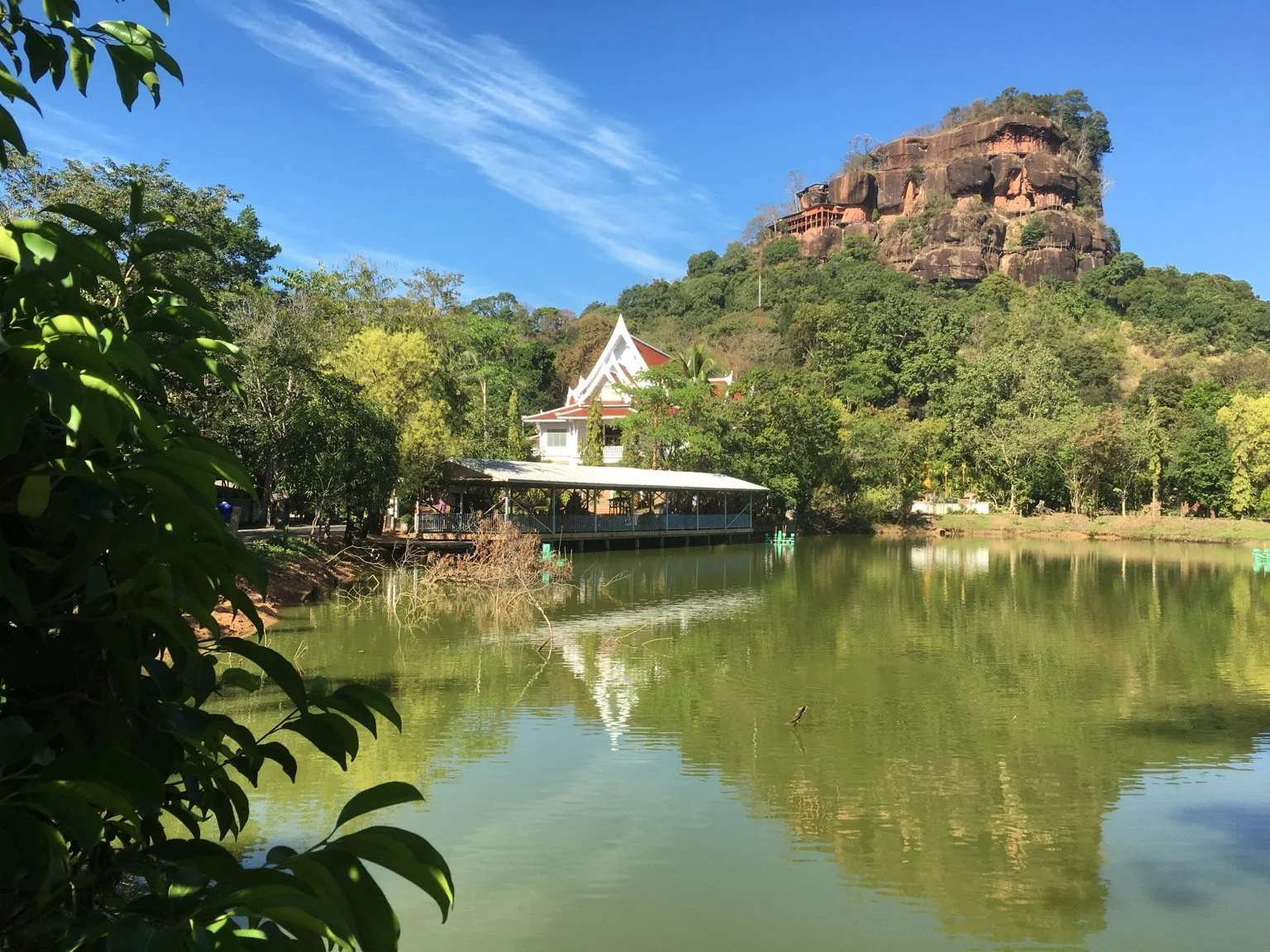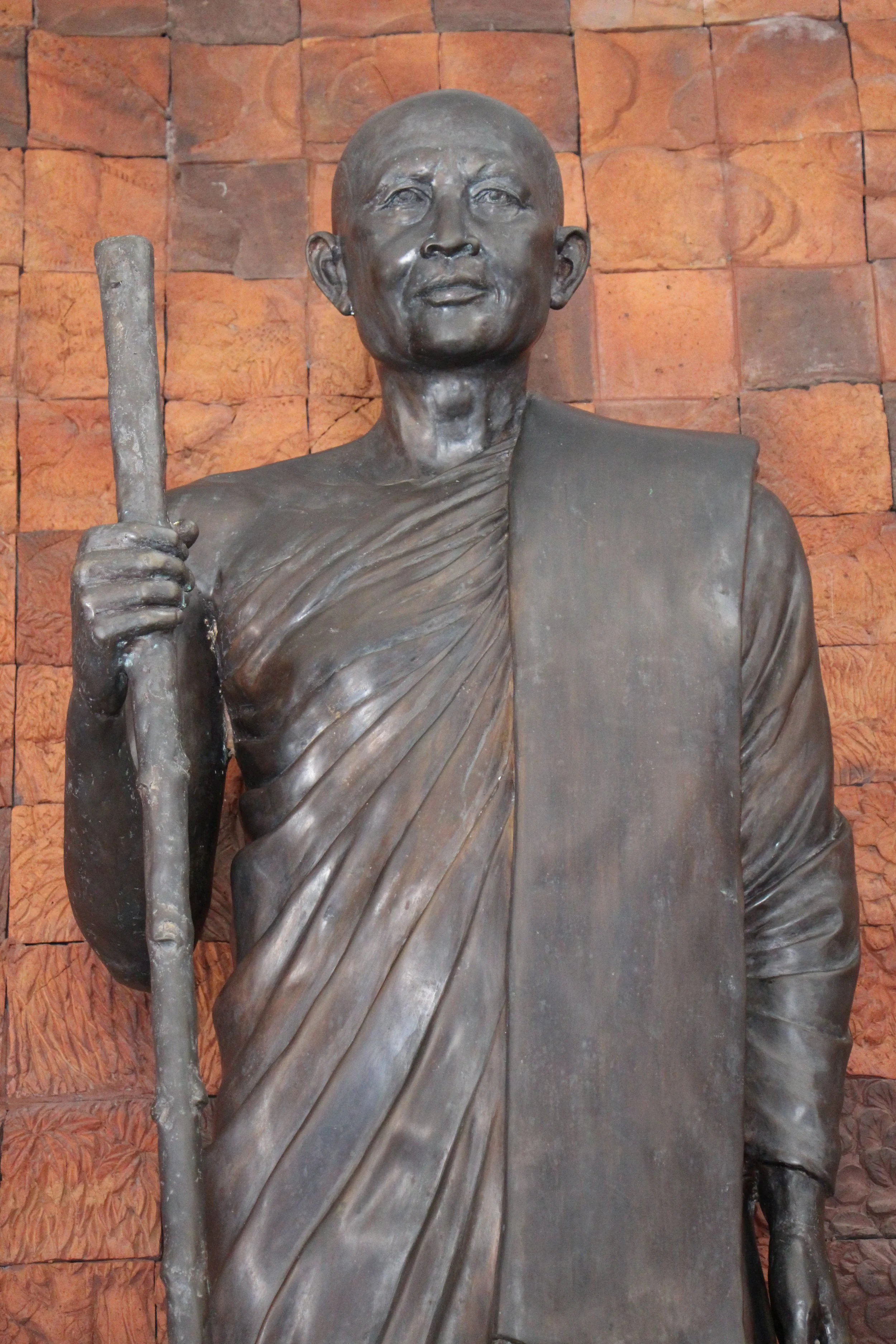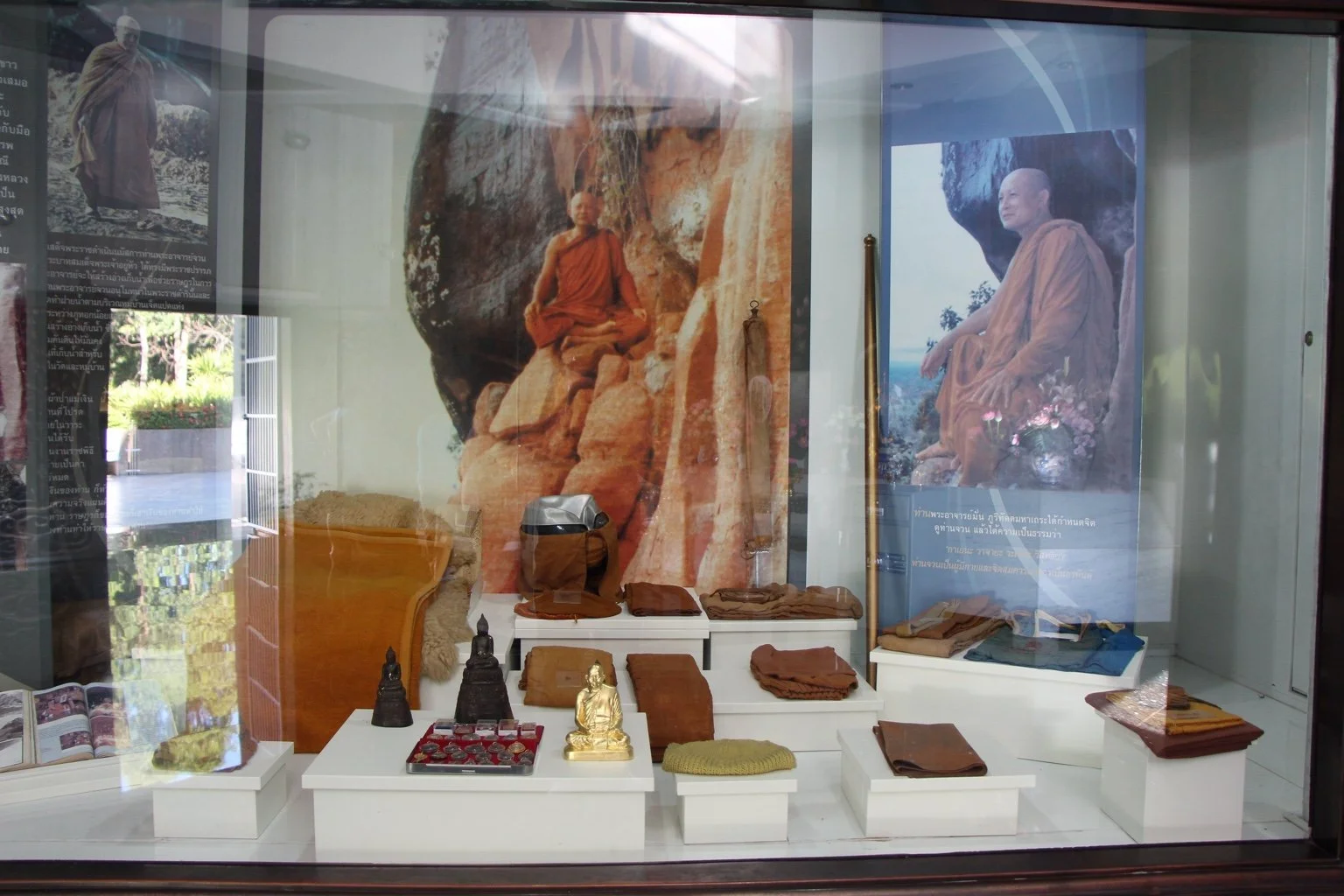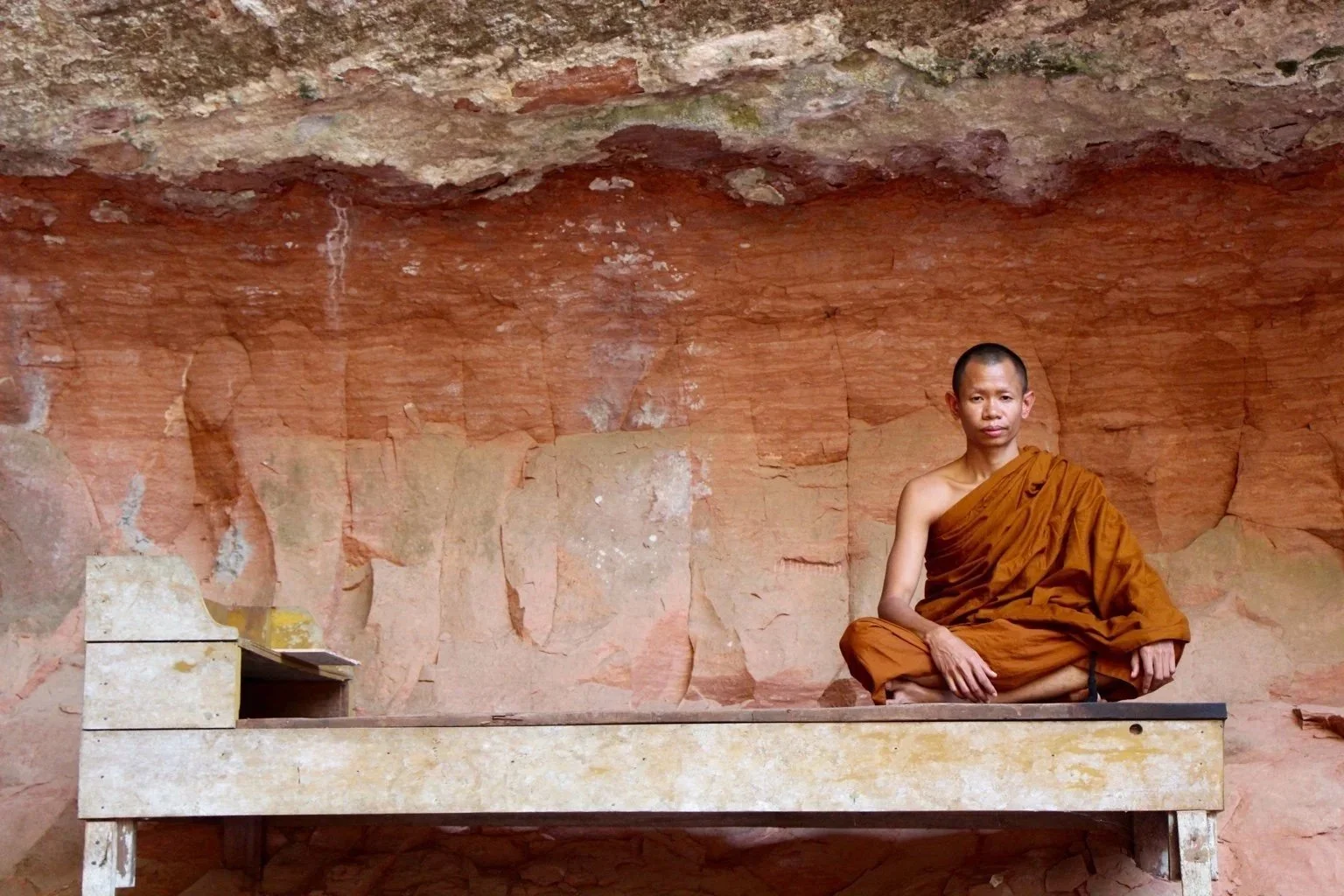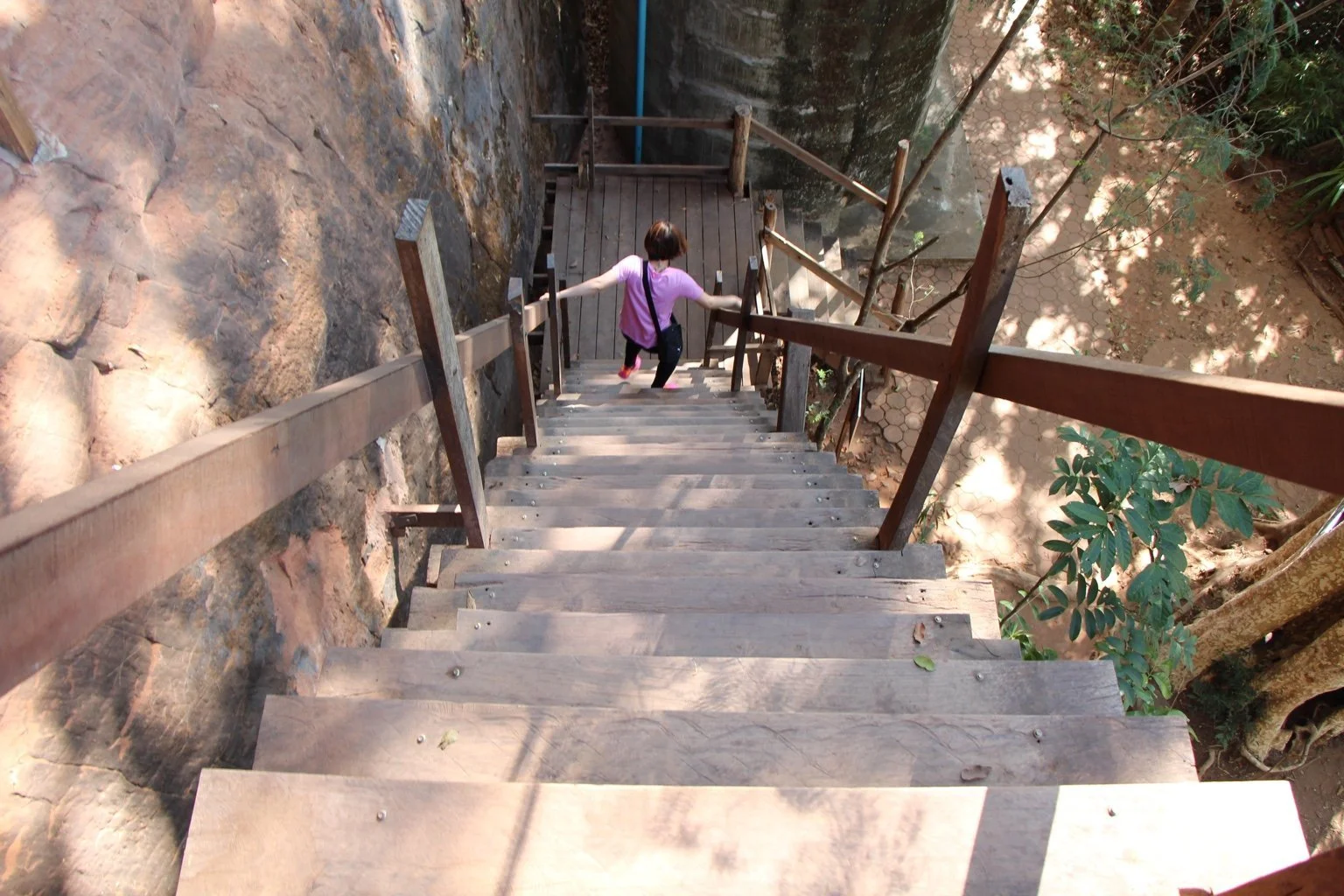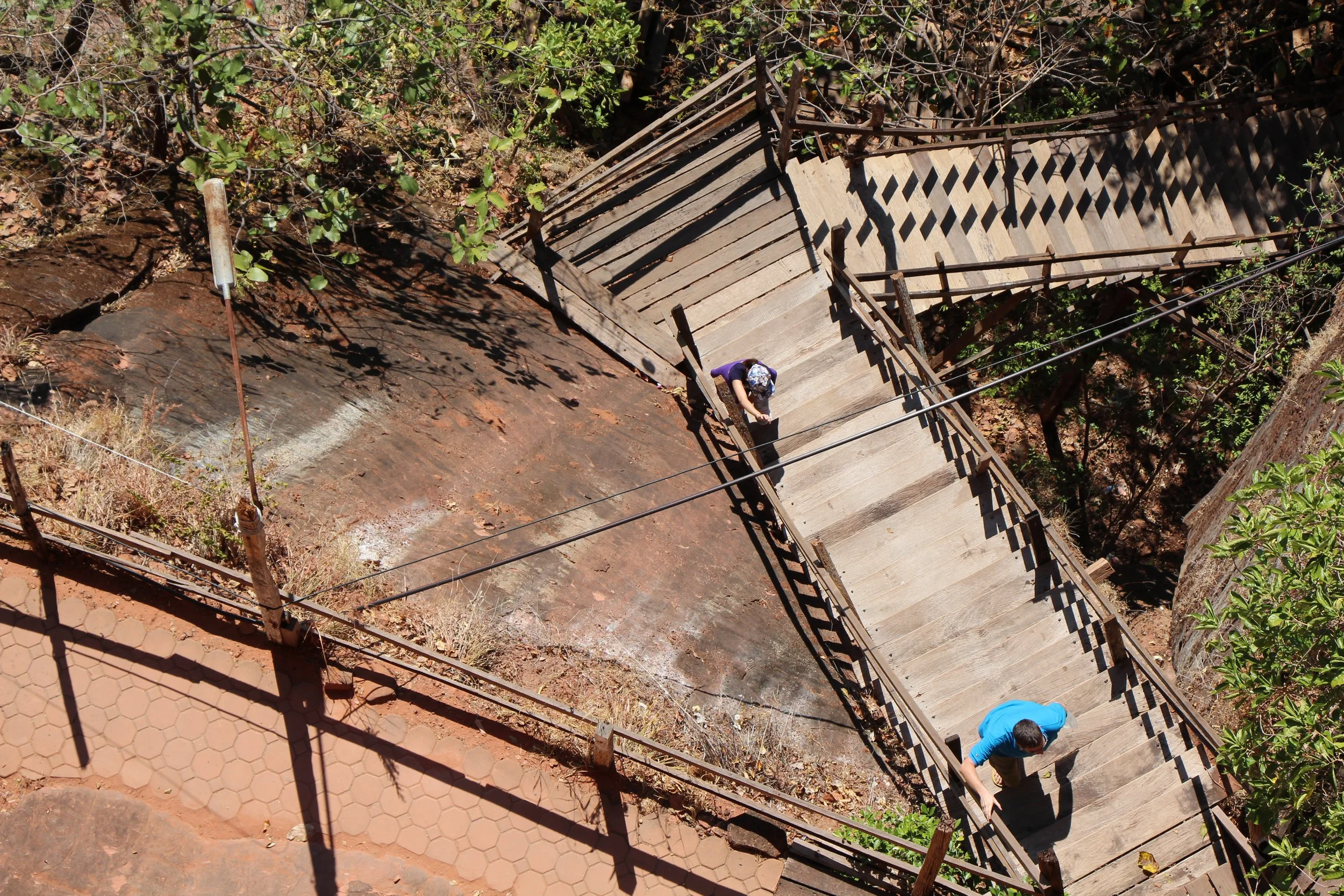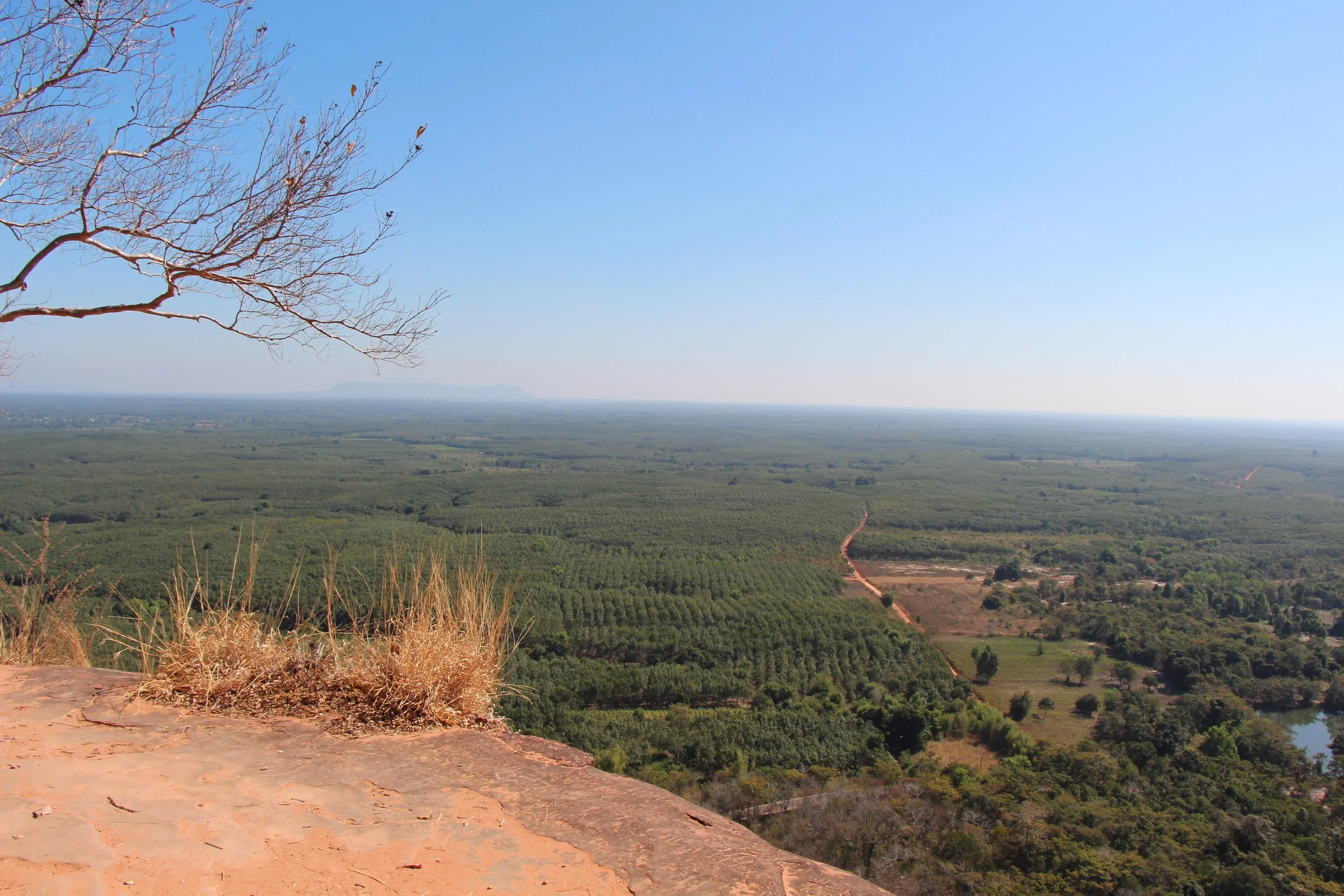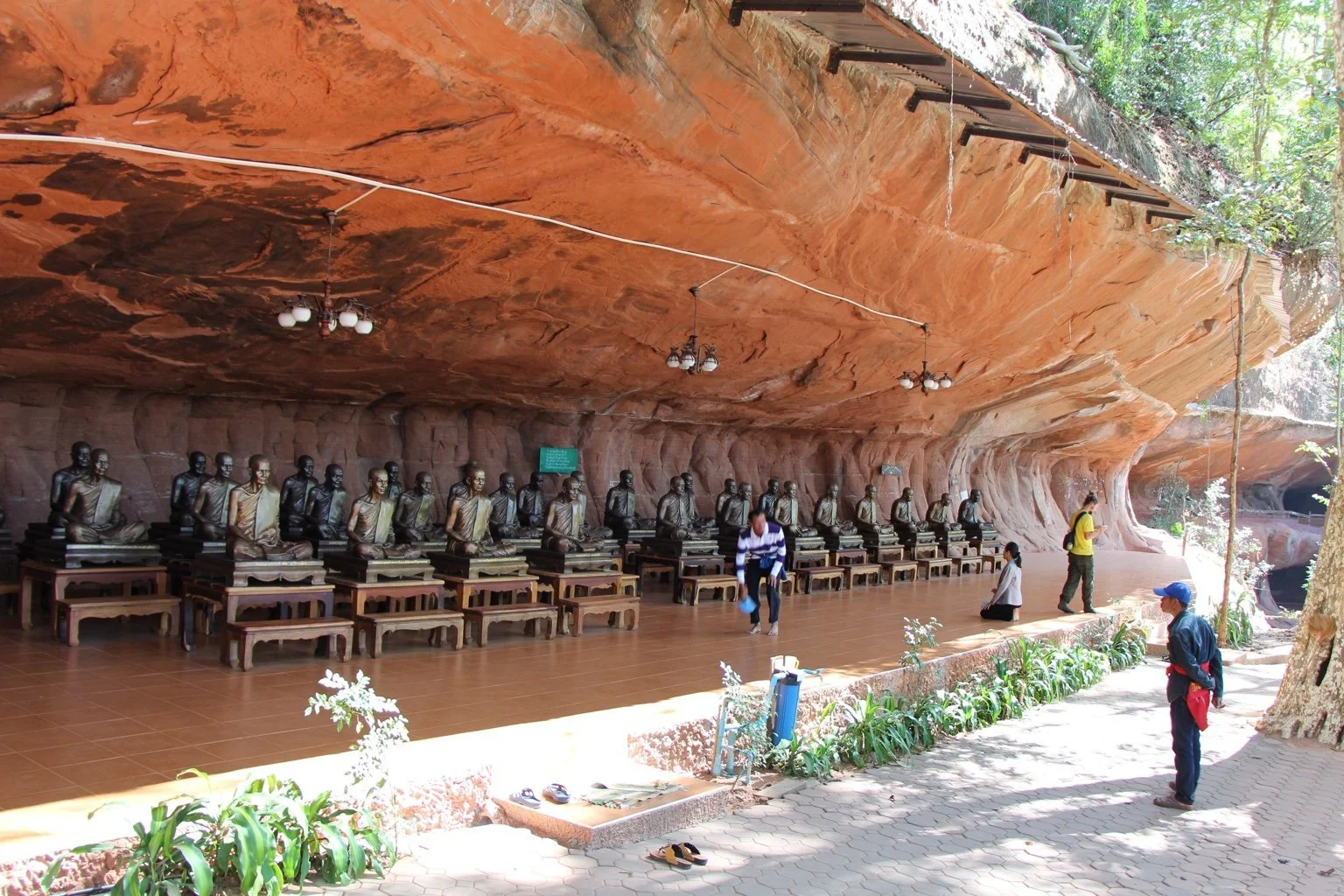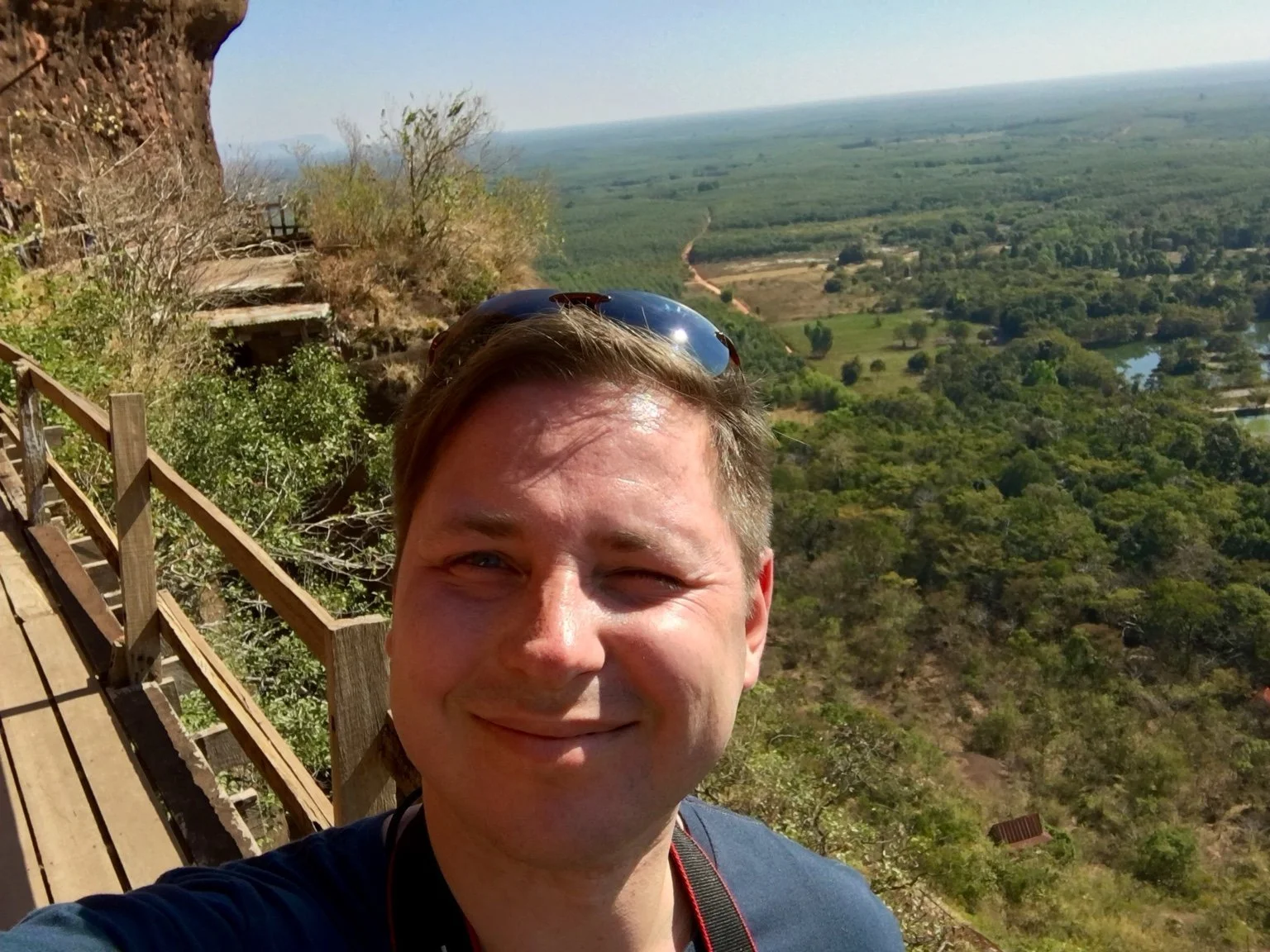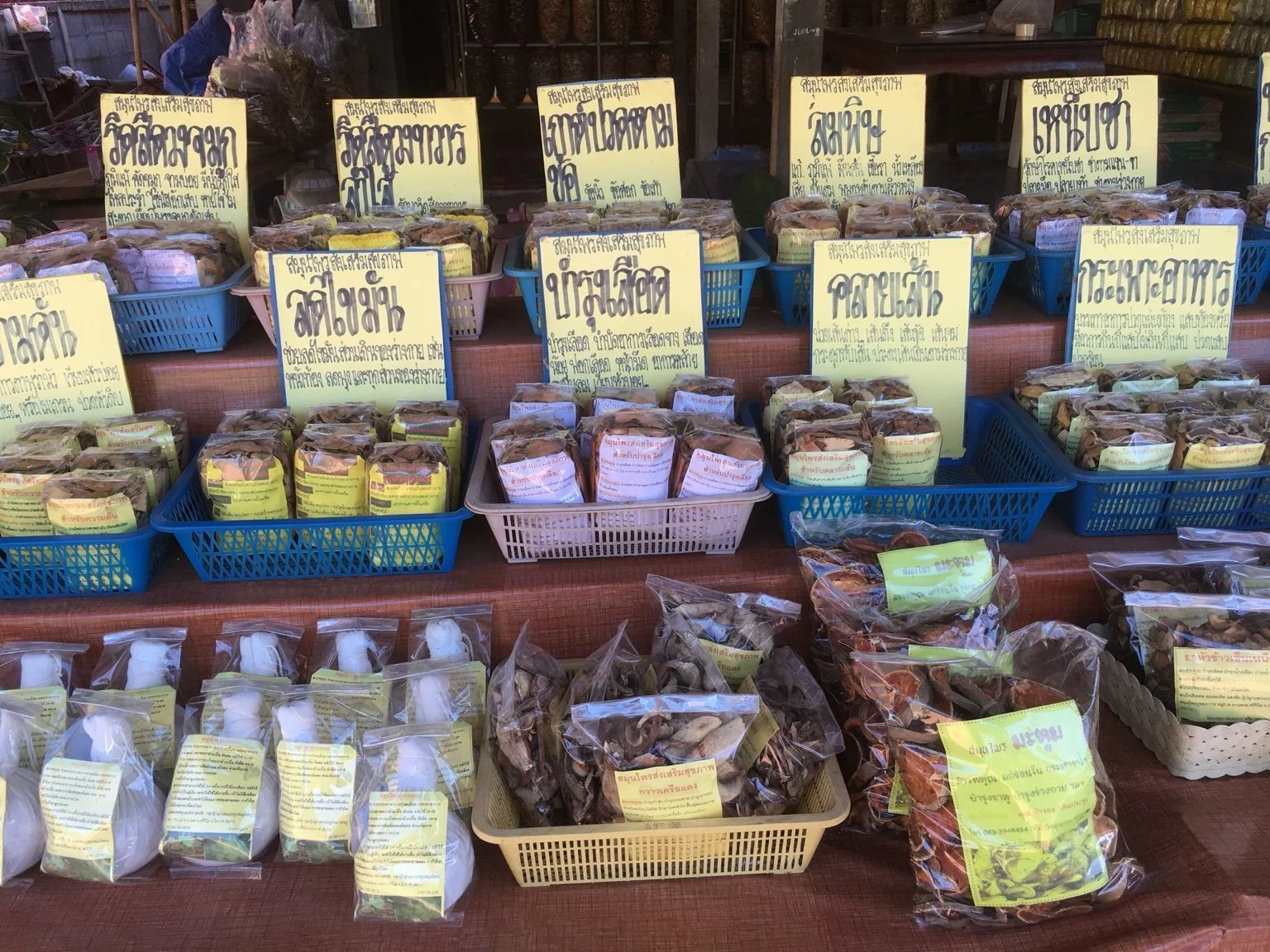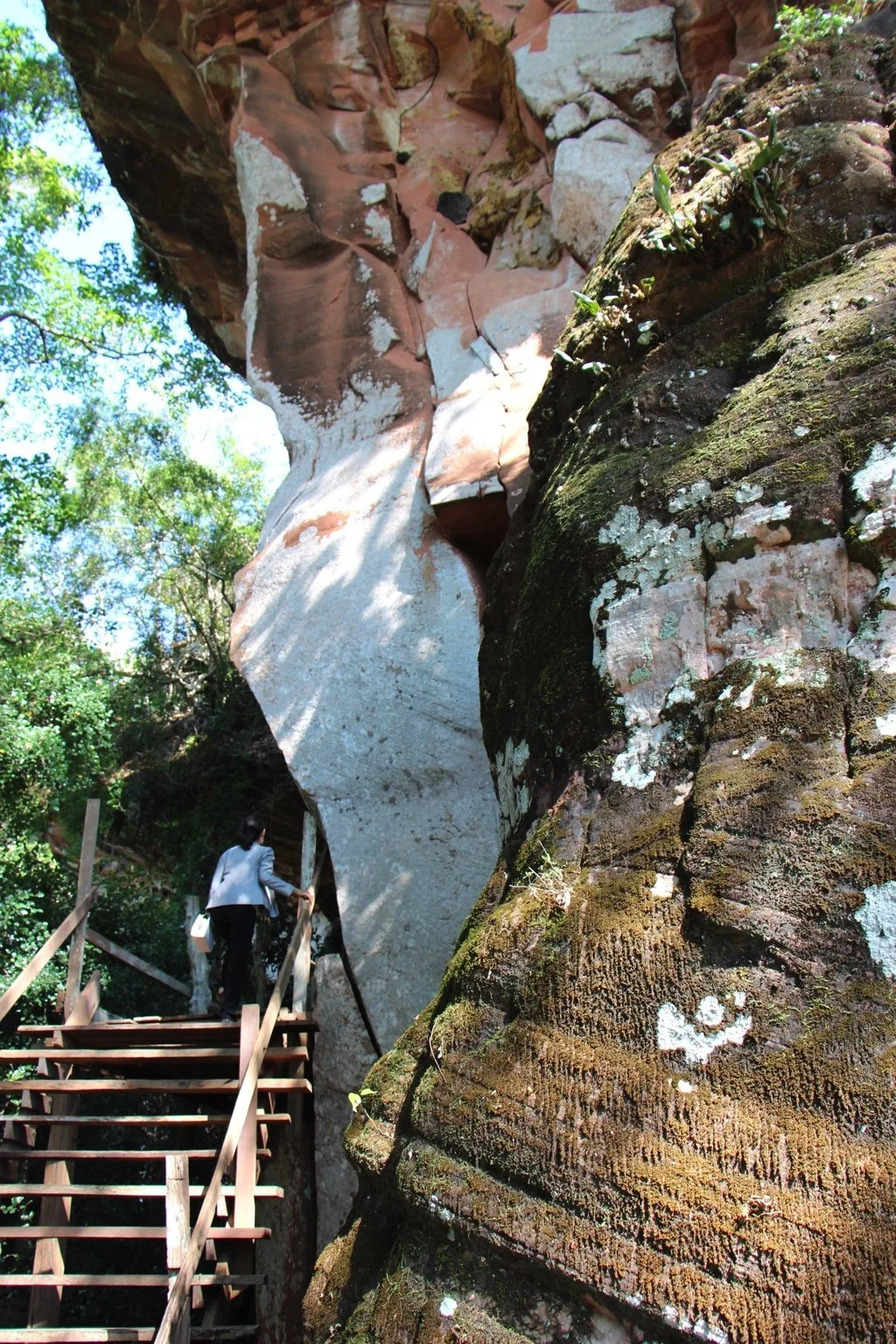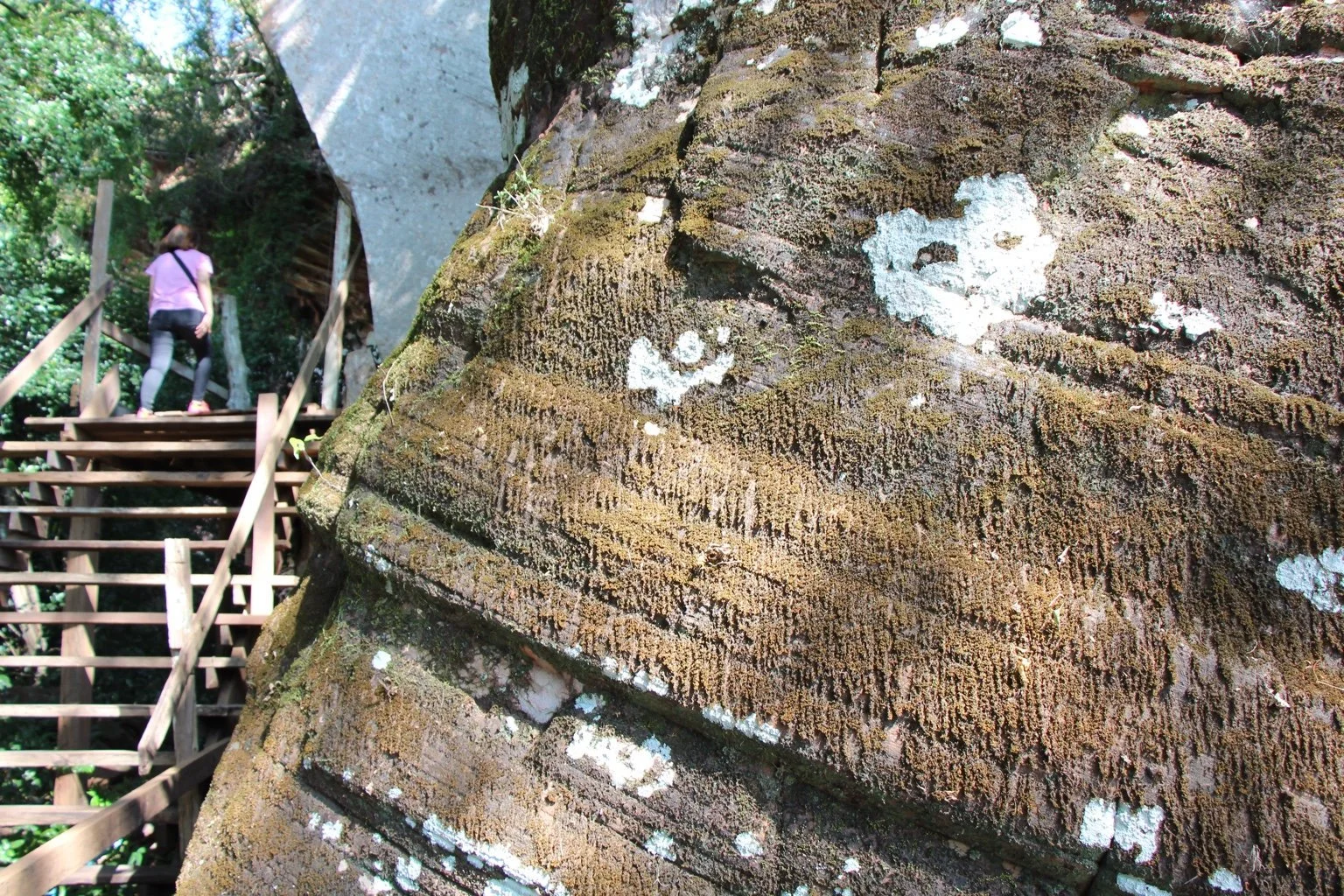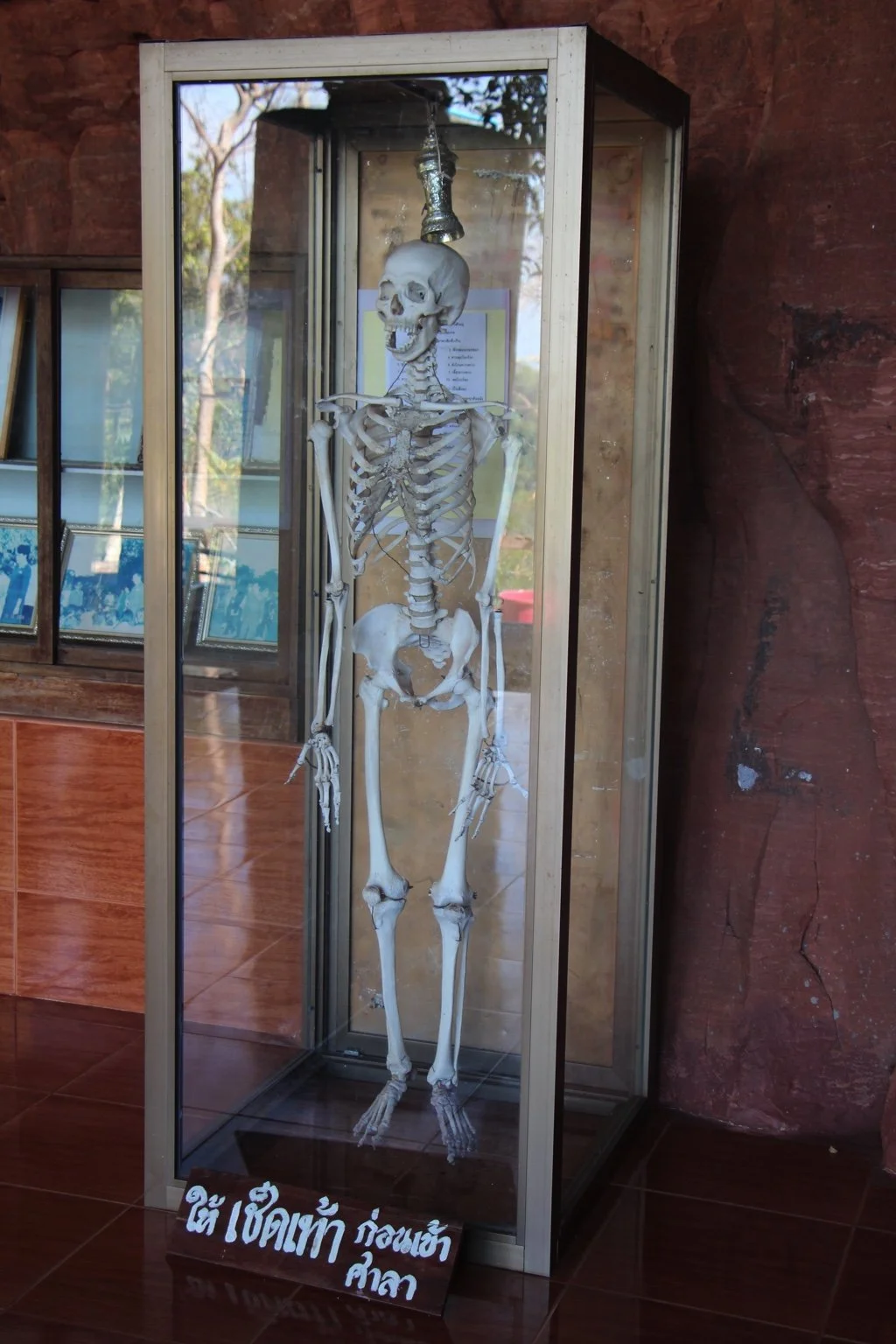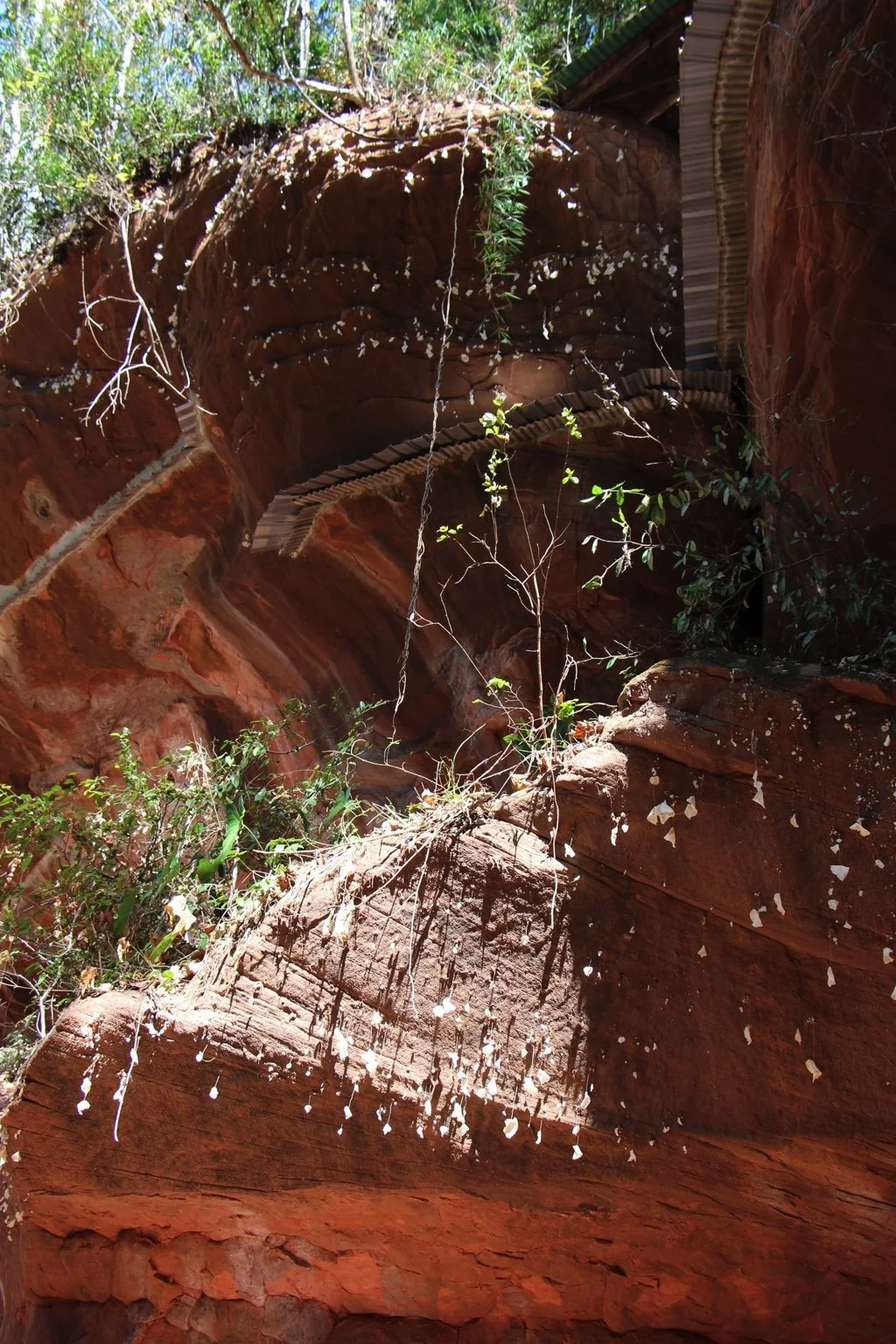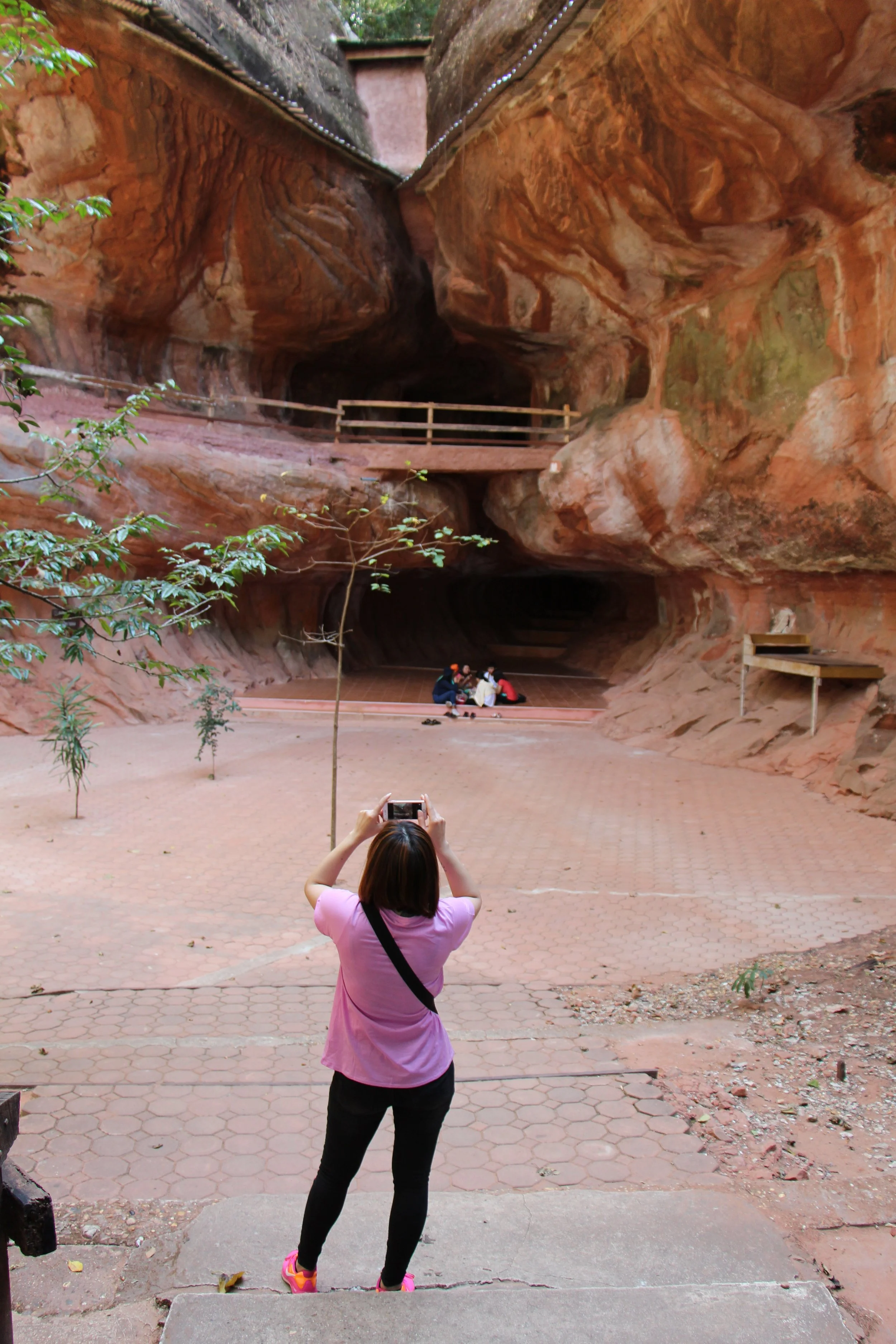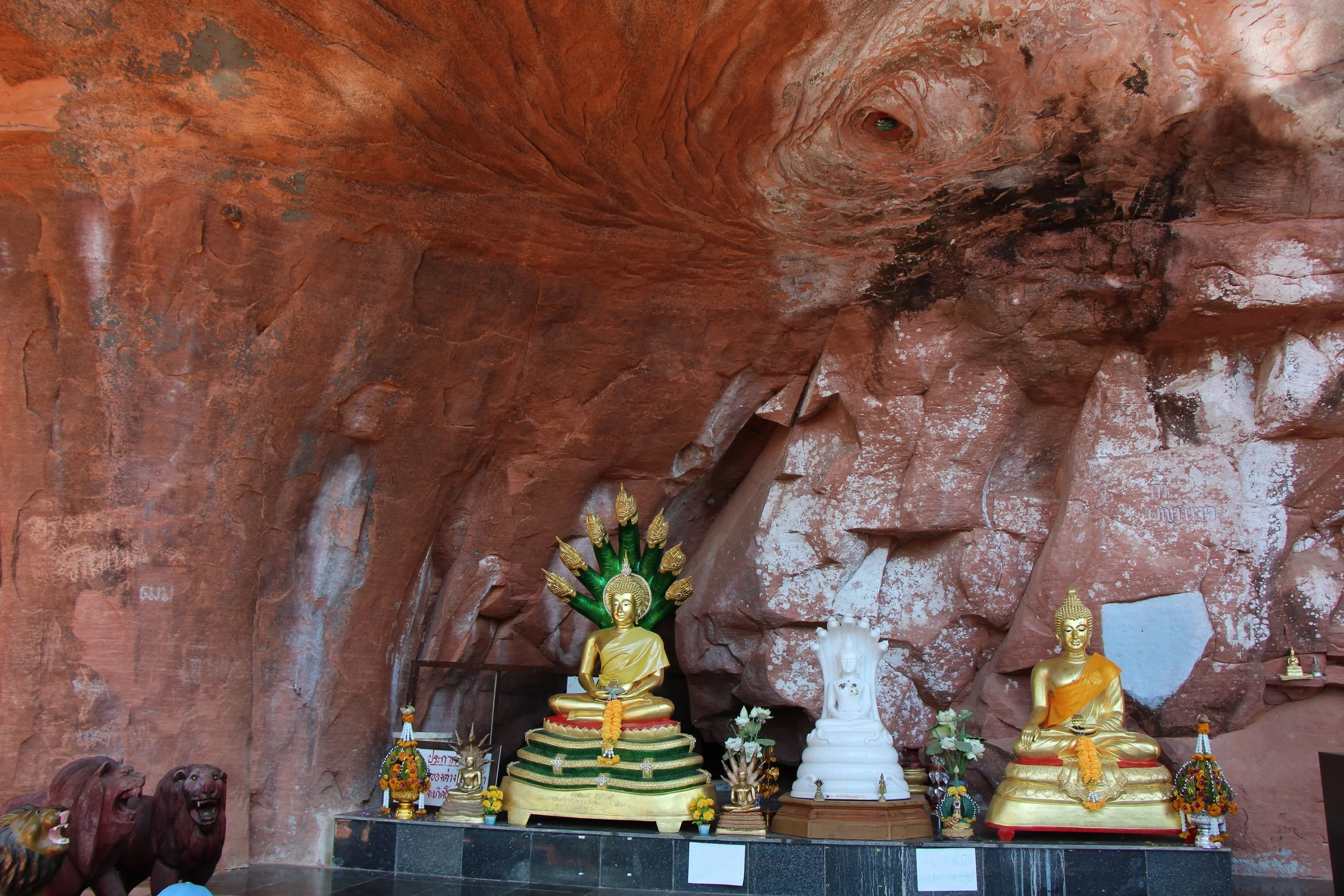Wat Phu Tok – The Mountain Temple of Isaan is One of the Most Unique Places to Visit in Thailand
In the middle of the flat, green landscape of Northeast Thailand (Isaan), Wat Phu Tok rises dramatically as a solitary sandstone cliff. Travel with me to this hidden gem where nature and spirituality form one of the most fascinating places to visit in Isaan.
Caption: Wat Phu Tok mountain and temple in Isaan. Photo: Frank Hansen
More pictures at the end of this article.
“Wat” means temple, while “phu tok” means “lonely mountain” in the local Isaan dialect – and that’s exactly what makes it so striking: an isolated rock crowned with a temple, encircled by wooden stairways that cling to the cliffside like a snake.
This is not your typical temple visit. Wat Phu Tok is both a physical challenge and a spiritual journey. Each step up the mountain represents one of the seven stages of Buddhist enlightenment – and the higher you climb, the more breathtaking the views become.
The Story of Wat Phu Tok
High above the rice fields of Bueng Kan province, a lonely sandstone mountain rises from the flat Isaan landscape. This is Wat Phu Tok – a place where spiritual devotion, human determination, and nature itself come together in one of Thailand’s most extraordinary temples.
From Solitary Mountain to Meditation Retreat
For centuries, Phu Tok stood untouched – a rugged outcrop known to locals as “the lonely mountain.” That changed in the 1960s, when a highly respected monk, Ajahn Juan Vilasitto, sought a remote place for meditation. He and his followers believed the mountain’s isolation and silence made it ideal for practicing mindfulness, away from the distractions of daily life.
Caption: A statue of Ajarn Juan at Wat Phu Tok. Photo: Frank Hansen
Caption: Wat Phu Tok amulets and pictures of Ajarn Juan meditating on the mountain, as well as his belongings. His relics was also on display. See the photo gallery at the end. Ajarn Juan was an enlightened buddhist monk in the thai forest tradition (Phra Thammayut). Photo: Frank Hansen
They began carving out spaces in the rock and building simple shelters for meditation. Gradually, caves at the base of the mountain became shrines, and the site evolved into a forest monastery where monks could live in harmony with nature.
Caption: Thai buddhist monk at Wat Phu Tok. I asked for permission to take photo of him. Thank you!
Photo: Frank Hansen
Caption: Wat Phu Tok has many spaces like this. Perfect if you want to meditate, pray or just sit in silence. I enjoyed a 20 minutes meditation here. Photo: Frank Hansen
The Wooden Stairways of Enlightenment
The most remarkable feature of Wat Phu Tok is its system of wooden walkways and staircases. Built entirely by hand by monks and local volunteers, these narrow wooden paths cling to the sheer cliffs of the mountain.
The construction began in the early 1970s and took many years to complete. Each level of the climb was designed to symbolize one of the seven stages of Buddhist enlightenment. To reach the summit, visitors must pass through all seven, each more challenging and awe-inspiring than the last.
The paths are both practical and symbolic:
Practical, because they allow access to meditation huts and shrines scattered along the cliffs.
Symbolic, because the climb itself mirrors the spiritual journey — difficult, sometimes frightening, but leading to greater clarity and perspective.
Caption: the stairways to Nirvana are not for the faint of heart—or the weak of knees. Photo: Frank Hansen
Caption: the air is thinner, but the goal is close. Imagine being a meditation master in this temple! Here you see how flat Isaan is, and in the midle of flatness- a giant spiritual rock. Photo: Frank Hansen
Caption: With many small steps you reach your goal. At Wat Phu Tok you live and embody the metaphor.
Photo: Frank Hansen
A Place of Reflection
Today, Wat Phu Tok remains a site of pilgrimage and meditation. The climb is not just a test of physical endurance, but also a reminder of impermanence — the wooden stairways creak, the wind blows strongly, and the drop below is dizzying. Standing on the upper levels, looking out across endless forests and the Mekong River towards Laos, visitors are reminded of how small we are and how vast the world can be.
Caption: We made it ! Yes, you feel small at the top. Here I am, like an atom in the universe. Living on a ball spinning in an endless space. I don´t know where I come from and where I am going after this life. So just enjoy and don´t take life too seriously. Photo: Frank Hansen
The spirit of Ajarn Juan still lingers here. He passed away in 1980, but his vision transformed Phu Tok from an isolated rock into one of Thailand’s most unique and spiritually significant temples. Remember, this is a holy site and active temple for monks and pilgrims. Travel here with respect.
Caption: Pilgrims praying at Wat Phu Tok. Photo: Frank Hansen
Caption: thai monks from the forest tradition practice meditation and mindfulness at Wat Phu Tok.
Photo: Frank Hansen
Climbing Wat Phu Tok
I stayed in Bueng Khan, only an hour drive from Wat Phu Tok. Bueng Khan is a cozy village town at the Mekong river, and there are many hotels with river view. Highly recommended. Bueng Khan is mostly famous for thai tourist. My girlfriend and I hired a driver that took us to the temple.
It was a hot day. “You should bring water”, the driver said. “The seven steps to enlightenment are hard, but rewarding in the end”. I asked him if he wanted to join us. “No thanks. I’ve been there before so I am enlightened already”, he laughed.
My girlfriend don´t like heights and the stairways to heaven is very basic. Not that you are at risk, but enough to make you think that you are. The journey to the top is therefore mindful and I reflected about life and death.
Caption: Climbing the stairs of Wat Phu Tok is all about breathtaking views – both the outer landscapes and the inner reflections… plus a fair dose of lactic acid and heavy breathing. Photo: Frank Hansen
The view is amazing and it is so fascinating to think about the dedication of the monk that built this. I wondered how many insights and deep meditation experiences that have been had at Wat Phu Tok. And how it feels to be here at night. I could feel the energy of the place, a very peaceful and spiritual vibe.
Wat Phu Tok is a very interesting place, and you can experience one of the most unique meditation sites in the world. Some experiences are simply forgotten, but my visit to Wat Phu Tok stays with me in my heart. Especially if you are interested in nature, spirituality/buddhism and places with fascinating stories, you won´t regret a trip to this temple.
Caption: This dog followed us all the way to the top. What a legend! And dogs are natural meditation masters, so he is absolutely at the right place. Photo: Frank Hansen
Caption: A real skeleton in a glass case reminds visitors of the impermanence of the body – an invitation to meditate on life, death, and the value of the present moment. Meditating in front of skeletons, lying in coffins, and reflecting on death are common Buddhist practices. They align with the concept of “memento mori” and help cultivate a clearer view of the reality of life and death. Photo: Frank Hansen
How to Get to Wat Phu Tok
Wat Phu Tok is located in Bueng Kan province, in far northeastern Thailand near the border with Laos. Many travelers associate it with Udon Thani since that’s the natural starting point, but the temple itself is about 150 km northeast of Udon Thani city.
From Udon Thani City:
Renting a car or motorbike is the easiest option; the trip takes about 2.5–3 hours.
Alternatively, take a bus or minivan to Si Wilai town in Bueng Kan, then continue by local taxi or tuk-tuk.
From Nong Khai (on the Mekong River):
About 2 hours by car.
From Bueng Kan town (the provincial capital):
Just 50 minutes by car – making it the most convenient base if you’re already up north.
Pro tip: Go early in the morning to avoid the heat and catch the golden light on the mountain.
Practical Information
Opening hours: Generally sunrise to sunset.
Entrance fee: Free, but donations are appreciated.
Dress code: Respectful clothing – cover shoulders and knees.
Difficulty: The stairs are steep and can be intimidating if you’re afraid of heights. Good shoes are recommended.
Behaviour: Be respectful. It is a sacred place with lots of meaning for thai pilgrims and the monks.
Final thoughts. Why Visit Wat Phu Tok?
Wat Phu Tok is not a mass-tourism site. It’s quiet, almost secret – the kind of place that feels like a personal discovery. Here, you’ll find Thai spirituality, dramatic nature, and a physical challenge that lingers in memory long after the visit. Please travel with respect if you go to Wat Phu Tok. It is not a Disneyland, but a deeply sacred and religious site for reflection and peace. I do believe that sacred places like Wat Phu Tok can open hearts and contribute to a better, more peaceful planet. Hence, I wanted to share this place with the world. If you go there, remember this is a golden opportunity for reflection and to improve your external life through internal change. Enjoy your trip!

